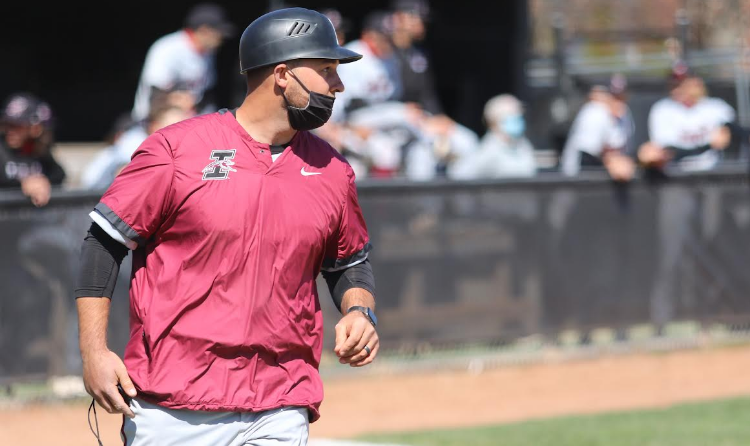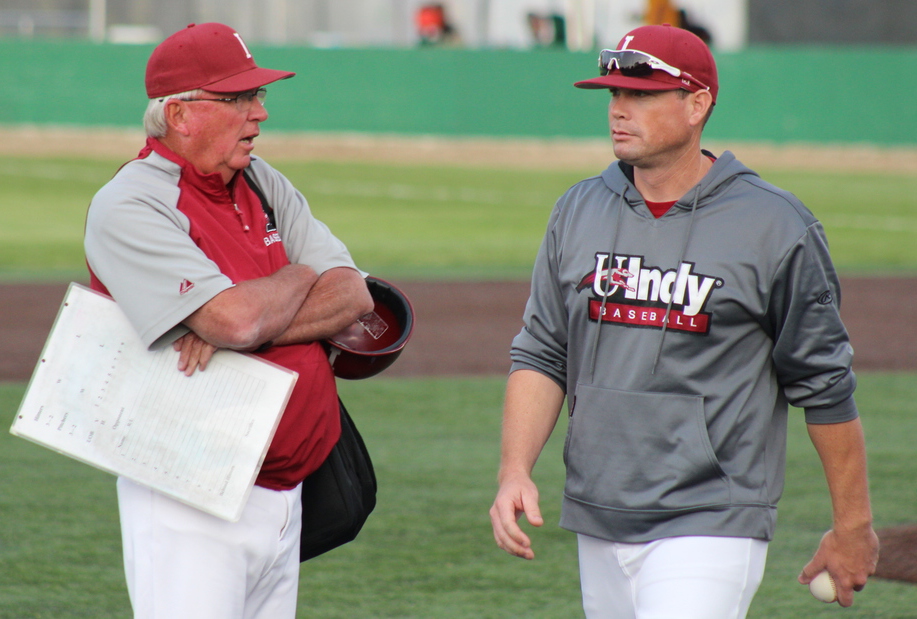
By STEVE KRAH
http://www.IndianaRBI.com
Trevor Forde saw the game from behind the mask as a player.
The University of Indianapolis assistant baseball coach knows what makes catchers tick.
Evanston (Ill.) High School graduate Forde (pronounced Ford like the car) was a backstop and played for former catchers Nate Metzger at Heartland Community College in Normal, Ill., and Gary Vaught and Al Ready at UIndy.
After competing for Frank Consiglio and graduating from Evanston in 2011, Forde played for two National Junior College Athletic Association Division II World Series qualifiers (2012 and 2013) with Metzger.
“Coach Consiglio taught me to put in the work,” says Forde. “The guys that out-work you will have more success.
“(Metzger, who is now associate head coach and recruiting coordinator at Wright State University) gave me my first look and passion for coaching college baseball. He’s a special human.”
Forde played for Vaught at NCAA Division II Indianapolis in 2015 and 2016 and then went right into coaching, beginning with as a graduate assistant in 2017 and 2018. He holds a bachelor’s degree and masters in Sport and Fitness Administration/Management from UIndy.
Former Indianapolis backstop and longtime assistant Ready became head coach of the Greyhounds beginning with the 2019 season.
“(Vaught and Ready) solidified that thought of coaching,” says Forde. “There’s a lot to be said why catchers get into the coaching realm. They see the whole field
“They are really good at managing relationships. They work with all the pitchers. That guy steps out on the mound and he believes in you. You have that connection.”
Forde says that ties in with coaching.
“You’re dealing with so many personalities and getting guys to trust you,” says Forde.
Many hats are worn by Forde the coach. He is in charge of Hounds catchers and also helps develop hitters and plays a big part in recruiting.
“Since catcher is my former position, I take a lot of pride it that,” says Forde. “We’ve got a pretty good catching core.
“In the simplest of forms I always tell catchers to make strikes strikes and we want to win the border line pitch. We’ve got to put ourselves in position to present the ball to the umpire well. We want to be on-time and have a subtle movement to manipulate the ball back to center.”
Forde says every college catcher has to be able to control the running game.
Throwing out would-be base stealers is one thing, but Forde shares the philosophy shared by Bellarmine University coach Larry Owens about limiting steal attempts.
“That resonates with me,” says Forde. “We can show arm strength. The word can get out (to runners). If you limit the amount of attempts, the number of stolen bases is going to be reduced.”
Forde says recruiting at this time of year is not as intense at the D-II level as it is in the summer and fall.
“We’re tying up loose ends with guys we’ve had contact with and late bloomers,” says Forde. “Next year’s recruiting class is pretty much wrapped up for us.”
In dealing with recruits, Forde tells it like it is.
“We’re going to be brutally honest at times with guys,” says Forde. “We won’t present ideas that aren’t realistic. The more honest you can be with the guy — and especially with their parents — the better.
“There are no grey areas. We are blunt at times.”
UIndy is part of the Great Lakes Valley Conference with teams in Indiana, Illinois and Missouri. Those three states plus Ohio, Kentucky and Wisconsin are at the core of the Greyhounds’ recruiting territory though the 2022 online roster also lists players from Canada and Colombia.
“We’re doing a pretty good job getting in the right players who believe in what we’re trying to do,” says Forde. “We need guys who are the right fit.”
In this COVID-19 pandemic era with players taking extra years of eligibility, Forde says it is important to know the players’ intentions about coming back or moving on.
“He might (repeatedly) say ‘I’m coming back’ then he gets a job offer,” says Forde. “As baseball coaches we brought him into our institution to get a degree.”
Forde and Ready are seeking well-rounded players and place a premium on defense.
“Coach Ready said it best — we’ve got to play both ends of the game,” says Forde. “At some positions I’d take a lesser bat with a plus-glove. The game is meant to be pitching and defense. You’re only as good as that guy that you roll out on the bump.
“I want my pitcher to be confident. If the ball is in-play their defense is going to make the play.”
The Greyhounds go for moundsmen that understand how to pitch and that contact is not a bad thing.
“We’re looking for bulldogs — guys that aren’t going to shy away from the moment,” says Forde. “That stems from our preparation. We teach guys how to pitch and how to read swings.
“We want a complete pitcher.”
Adam Cormwell is UIndy’s pitching coach. Scott Holdsworth is a volunteer assistant. Jacob Christie is a graduate assistant. The support staff includes athletic trainer Makenna McAteer, strength and conditioning coach Andrew Fallon and sports information GA Brady Budke.
Indianapolis, which went 23-21 overall and placed second in the GLVC at 19-13, opens the 2022 season Feb. 18 at Greyhound Park against Notre Dame (Euclid, Ohio). A series at Lake Erie (Painesville, Ohio), where former UIndy assistant Landon Hutchison is now head coach, begins March 11.
Trevor and high school sweathart Emma were married in July 2020.







